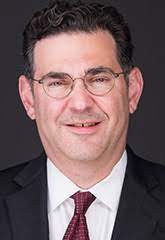WASHINGTON, DC — For the first time in U.S. history, adults over 65 are on pace to outnumber children under 18—a tipping of the scales that is expected to occur by the end of this year. That shift is already putting a strain on the nursing home industry as a whole and on VA in particular, where demand for long-term care has increased significantly in recent years.
The department fills much of that demand by subsidizing care at private- and state-run facilities, but staffing shortages in recent years have contributed to residents being put at risk, and a proposed federal staffing mandate may cause more problems than it solves, some experts say.
“In 2020, when the pandemic first hit this country, too many nursing homes were not prepared to contend with the pandemic. Too many residents died. The system failed too many,” admitted Jonathan Blum, principal deputy administrator at the Centers for Medicare and Medicaid, at a Senate VA Committee hearing last month. “CMS rules and CMS guidance was not established to ensure the overall safety of nursing home residents, staff and their family.”
According to Blum, CMS has since shored up its rules and reporting, and many of the gaps that were exposed during the pandemic have been filled.
“Never again should we see the despair we saw in 2020,” he told legislators.
Staffing remains a perennial concern, however. During interviews with nursing home officials, CMS investigators are told time and again that “more staff, better staff, will ensure quality outcomes and will ensure safety and keep facilities open,” Blum said.
The Biden administration is currently considering implementing a federal staffing mandate for nursing homes, requiring a minimum ratio of trained staff to enrolled patients. According to the American Health Care Association and the National Center for Assisted Living, two-thirds of states already have minimum ratios that nursing homes are struggling to meet. That struggle manifests in long wait-lists for state nursing homes, including veterans’ homes, and considerable burnout seen in existing staff.
Many of the legislators on the Senate VA Committee were skeptical of staffing mandates, concerned that such an order would lead to homes shutting down.
“Everybody wants more staffing, and I’d like a date with Angelina Jolie, but that ain’t gonna happen,” quipped Sen. Angus King (D-ME). “We’ve got enormous staffing problems and to say [we need a certain number per resident] opens up liability questions, and it puts the staff under a lot of strain, because it’s unrealistic right now. You can’t conjure people out of thin air.”
Blum admitted that CMS is still thinking about how to address staffing policies.
High-Quality Outcomes
“One of the things we see in our data is that those facilities that have a consistent staff, a more stable staff—they have higher quality outcomes,” he declared.
Meanwhile, VA has devoted much of its focus in recent years to finding ways for veterans to avoid nursing homes entirely. That has resulted in the creation of a number of in-home care programs, including the providing of home health aides, providing respite care for caregivers, adult day healthcare and the medical foster home program.
One of the more popular and successful programs has been Veteran-Directed Care, where VA provides veterans with a flexible budget for services that can be managed by the veteran or caregiver.
In April, President Joe Biden released an executive order requiring VA to expand Veteran-Directed Care to all VA medical centers by the end of FY2024. According to VA leaders, the department is on track to meet that deadline.
However, for the most vulnerable veterans, these new programs may not be enough.
“Our members don’t have time to wait for feasibility studies when it comes to expanding some of these programs,” Carl Blake, executive director of the Paralyzed Veterans of America, told the committee. “Long-term services and support are reflections of the long continuum of care that our members engage with the VA in. They have an acute injury, they get acute care, they get acute rehab. In most cases, they transition into the home … and want to live most or all of their life in as independent a fashion as possible. Some of them will end up back in a VA in a long-term-care facility.”
Still, most community-based nursing homes are not feasible solutions for these veterans. Few staff have the specialized training it takes to care for paralyzed veterans, and many facilities are not physically accessible to these veterans at all.
The options within the VA system are limited, as well.
“There are six long-term-care centers specific to spinal cord injury care in the VA system,” Blake said. “One of those facilities is west of the Mississippi in Long Beach, California. There’s a footprint in Dallas. There’s an expansion being done in San Diego. It still will not matter. It’s not enough to meet the needs of our members, who will end up there more often than not, because that’s the complex care that they need, and VA delivers it best for our members.”


